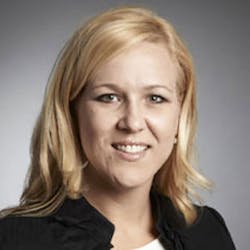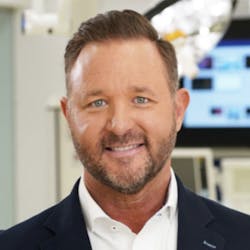Since the start of the pandemic more than two years ago, health systems have had to quickly think of time saving ways to operate more effectively. This is especially true in the operating room (OR) where time is never a luxury for staff members.
Hospitals continue to postpone surgeries due to hospital beds being needed for COVID patients. The World Health Organization (WHO) reported that elective surgeries are still disrupted in 59% of the world’s countries.1
COVID is still a financial burden to hospitals, accounting for hospital expenses to be up 10.6% on a per-adjusted discharge basis. In addition, healthcare workers are experiencing higher rates of burnout due to long hours and heavy workloads. “This issue has contributed to the rise in labor and other expenses as a result of low staff morale leading to high turnover rates and additional expenses associated with security measures and training.”2
Patient safety has always been and will continue to be a priority for healthcare workers. With the lingering COVID-19 pandemic still on the rise, health systems have had to reevaluate their safety tactics for both patients and staff.
Healthcare Purchasing News spoke with a number of healthcare professionals and supply/solutions providers about time management challenges and what OR staff could do to help with workflow efficiencies.
Time management
“Building procedural efficiencies through surgical packs to minimize the need to pull supplies improves workflow for supply chains, SPD, and OR staff when time is more critical than ever,” said Haines. “Now is the time to look at the activities staff members spend the majority of their day doing and determine if there are better, faster or more efficient ways to focus on critical functions that enhance throughput and revenue and less on non-value-added time chasing and managing base supplies,” she said.
“We’ve seen success everywhere – especially surgical staff working outside of the OR to support the needs of other units as the pandemic’s wrath shut down elective surgeries,” she continued. “Supply Chains are working together to shift inventory and labor to accommodate the fluctuations of demand. Clinical staff are adapting and using product alternatives or substitutions that they hadn’t used before, reducing waste supply and only using what is needed to minimize supply shortages. The pandemic stressed our supply flows, but the OR remained resilient.”
“We have seen customers use more single-patient-use items to decrease turnover times. AliMed has a full line of single-patient-use foam positioners and disposable straps to not only provide faster cleanup but help reduce cross-contamination between procedures,” he noted.
Reducing OR turnover time in between patient cases is another way healthcare facilities can build efficiencies into the perioperative space. Diversey developed its TurboTurn OR turnover program to help improve results and employee safety while increasing productivity with specially designed products, procedures and equipment for cleaning operating room areas.
“Our mission has been to design a total cleaning solution that integrates products, tools and equipment to optimize results as efficiently as possible,” said Larinda Becker, the company’s Executive Director of Marketing, Infection Prevention. “Diversey’s TurboTurn program allows your staff to quickly align tasks to ensure the lowest turnover time without compromising quality.”
- Oxivir Disinfectant Cleaners with 1-minute contact time against key healthcare associated pathogens but gentle on surfaces and staff.
- Virex Plus concentrate for a 3-minute contact time, used for floors and walls along with the TASKISUM single use microfiber system.
- MoonBeam3 UVC disinfection technology for use in between procedures or end of day terminal cleaning to provide added assurance.
- Products and procedures to streamline and standardize processes and ensure proper cleaning and disinfection.
In late 2021, Medline launched its Peri-Op Performance Program, which helps provide clinical and business roadmaps to healthcare systems to improve OR efficiencies and outcomes. Through the program, Medline conducts a thorough discovery assessment to better understand the partner’s goals and initiatives to find ways to reduce costs and spending, improve patient and procedural outcomes, streamline supply chain management and procurement, and to optimize space and storage throughout the facility.
Haines highlights Springfield Memorial Hospital in Springfield, IL as a program success story.
“Springfield Memorial Hospital was looking for a way to re-evaluate their operations. The outcome was a plan that included product and procedural recommendations to improve supply chain operations and create efficiencies in other areas, including sterile processing instrumentation tray utilization and consolidation, suture management redundancies, as well as skin health and hand hygiene solutions,” she said.
CS/SPD and OR collaboration
Collaboration between the Central Service/Sterile Processing & Distribution (CS/SPD) departments and OR teams is critical to optimizing procedural efficiency because reprocessing of instruments and devices takes time and effort to be done effectively and safely.
Begin stresses the value of the big picture.
“We are now increasingly focused on throughput and efficiency in a holistic sense and strive to help various departments seamlessly work together,” Begin added. “Through these technologies, we truly believe that this creates an environment where the total solution is greater than the sum of its parts.”
To enhance instrument cleaning and disinfection, Ruhof developed its Elementum detergent, which conforms to 2018 ASTM: D8179, AORN and AAMI guidelines for optimal cleaning detergent characteristics. It features four new molecules of enzymes created for the medical device cleaning market to quickly break down tough-to-clean medical soils, according to the company.
Supply in demand
Supply shortages have challenged companies and health systems everywhere. Manufacturers have responded by increasing production and offering logistical strategies and tactics to help healthcare organizations maximize their inventories beyond just ordering more product.
“Our field sales team actively works with each of our customers to ensure we are meeting the needs of their OR,” said Ward. “We continue to allocate Biogel surgical gloves to help ensure that our current customers have access to a consistent supply and encourage them to prioritize the glove’s use for surgical procedures.”
To provide customers with guidance on sterile surgical glove conversation, Mölnlycke developed the Surgical Glove Conservation Strategy document, which includes recommendations from the World Health Organization on the appropriate use of surgical gloves, particularly with the high demand of exam gloves.
“AliMed has seen a huge spike in demand for gel positioners, which has prompted us to increase our supply. We recently launched our AliBlue Gel Positioners to help mitigate the national shortage we have been seeing,” said Baker.
Ventilator manufacturers have also experienced spikes in demand during the pandemic. To meet the need, Getinge boosted its ventilator production by 160%, according to Begin, as well as increasing production of heart-lung support systems.
“While our ICU and CC products addressed the frontlines of the ICU, we also saw a need for innovative products to help address increased efficiency due to significant staff shortages and an increase in patients,” Begin said. “We worked to showcase our solutions, including our Torin OR Management System, that has been developed to address these needs through the maximization of data to automate otherwise manual processes, enhance coordination and enable surgical departments to manage their workflows, even in absence of typical levels of OR human capital. Through this innovative solution, we helped to empower hospitals and healthcare providers to accomplish more with less effort.”
Becker says Diversey has launched several new products and services to address staffing needs and shortages to simplify products and processes. These also help improve turnover speed that may enable not only a safer environment, but possibly more cases through the facility, stating:
“There has never been a more critical time for cleaning and disinfection to help patients and staff feel confident in facilities. We created materials and checklists for reopening, short-term product solutions to avail capacity, and expanded production, warehousing and availability of product through 24/7 production, she said.”
To overcome the shortage of commonly used raw materials in the production of PPE, Medline turned to alternative materials, which it leveraged to develop new products.
“Early in the pandemic PPE was the hot commodity, everyone needed it and there wasn’t enough to go around,” said Haines. “To better supply PPE and facemask manufacturing, along with all other key categories made of nonwoven raw material, we pivoted to support the market by introducing alternative raw materials, substitute items and spot buy items.
“Specifically, within the OR, with surgical drapes and gowns, we introduced a new bilaminate drape material and spunlace gown material to increase our overall capacity and support the market when nonwoven materials were in such high demand,” Haines added. “As we learn of supply disruptions that will impact components in our kits, we proactively work with customers on alternates to ensure they are getting the supplies they need.”
Evolved training methods
Surgical care continues to evolve despite the ongoing supply chain disruptions caused by the COVID-19 crisis. One challenge has been properly training OR teams on new products as they have struggled with staff shortages, COVID-19 prevention measures and postponed/cancelled procedures. As a result, the push for virtual learning options increased.
“We have leveraged the use of virtual meetings and tailored our videos to train and instruct healthcare professionals on the use of AliMed products,” said Baker. AliMed’s website includes a series of step-by-step training videos for their products.
Mölnlycke has responded to the challenges of staff training with a variety of online resources:
“[We have] focused on increasing our surgical gloves virtual training, education and evidence access on our Connect2Know.com website,” said Ward. “Educational videos for open, closed and assisted glove donning techniques along with printable instructions for staff are easily viewable and downloadable. For those needing protection from chemotherapy agents, we have enhanced our reference materials for the best gloves to use with chemotherapy permeation charts available on our website as well as Connect2Know.com.
“[We’ve] also expanded our virtual speaker program to include topics on Sharps Safety and the utilizing the LEAN process in the OR to minimize waste,” she continued. “Instructions for scheduling programs live or virtual with our clinical nurse specialists are posted and also regularly communicated through our field sales team.”
Diversey offers its training program, which has been awarded the AORN Seal of Recognition, online, virtually or in-person. The company has also developed numerous online videos, podcasts and training delivery methods to adapt to the OR’s needs.
Medtronic also has taken a hybrid training approach with a mix of in-person and online training programs.
He added, “Since the beginning of the pandemic, we have expanded our provider training programs. We now offer a secure, live platform where trainees join a faculty member in the OR and observe a procedure from multiple points of view both from around the room and laparoscopically. This allows for a more comprehensive experience where trainees interact with the faculty member in live dialogue, regardless of location.”
For the parts of the world where in-person training is possible, Medtronic includes a hybrid visiting clinician program to its platform. Through the program, trainees have their choice of attending procedures in-person or virtually.
“Historically, the adoption of remote surgeon training solutions has been slower relative to other education markets. The universal need for a remote pivot in response to the pandemic has significantly reduced resistance to remote training technology and accelerated its adoption. As a result, the adaptation from in-person to hybrid clinical education is a practice we anticipate leveraging going forward as we expand access to the latest technology and accompanying education for providers across the globe,” Anderson said.
Medline’s Haines stresses a return to the fundamentals of education.
“We had to design a multimodal approach to education; of course, virtual replaced face to face training but the pandemic also challenged us to look at how we can provide quick and simple forms of education,” she said. “Time was a luxury that we didn’t have with surgical backlogs and staffing shortages, so education had to be built around the time that was available, and that looked very different. Now, more than ever, it’s time to focus on re-engaging and re-training staff. Although the right intent is there, everyone needs a refresher on “back-to-basics.”
Healthcare resilience
Over the course of the COVID-19 pandemic, there have been shortages from supply chain to healthcare workers. In a survey conducted by the American Association of Critical Care Nurses (AACN) in September 2021, 92% of nurses think their careers will be shortened by the pandemic and 66% have actually considered leaving the profession.3
Additionally, there will be more registered nurse job openings this year than any other profession, according to the American Nurses Association. “With more than 500,000 seasoned RNs anticipated to retire by 2022, the U.S. Bureau of Labor Statistics projects the need for 1.1 million new RNs for expansion and replacement of retirees, and to avoid a nursing shortage.”4
Nurses experience some of the highest rates of lower-back injury, with about 25% of worker’s compensation claims attributed to injuries caused by physically transporting patients, according to the Occupational Safety and Health Administration (OSHA) and mentioned in the AliMed training video for their new PPS Glide Air-Assisted Lateral Transfer System. Time out of work for injury exacerbates an already thinning workforce, says Baker.
“Customers are looking for ways to manage staffing shortages that have been exacerbated by the pandemic. Many hospitals are moving to air-assisted lateral transfer devices, which help minimize the risk of those injuries while using fewer resources when moving larger patients,” Baker said.
To help combat these challenges, AliMed is launching the PPS Glide Air-Assisted Lateral Transfer System —a safer, more resource-efficient transfer device, according to the company. It requires two caregivers to operate and can hold up to 1,200 pounds, significantly reducing the risk of nurse injury.
To address labor shortages, Getinge supports increased efficiency, throughput and workflow optimization, Begin indicates.
“One specific innovation is the connection of our Torin OR Management and T-DOC instrument tracking technologies,” he said. “The two solutions work together to help improve workflows and the efficiency of processes and procedures in healthcare facilities. This emphasis on real-time bi-directional communication allows healthcare facilities to build efficient schedules to maximize OR space and better support patients.”
2022 OR Buyers Guide Listings and Product Spotlights
References:
1. Essential health services face continued disruption during COVID-19 pandemic, February 7, 2022, World Health Organization. https://www.who.int/news/item/07-02-2022-essential-health-services-face-continued-disruption-during-covid-19-pandemic. Accessed February 8, 2022.
2. https://www.aha.org/system/files/media/file/2021/11/fact-sheet-hospitals-need-remaining-provider-relief-funds-to-overcome-ongoing-challenges.pdf. Accessed February 8, 2022.
3. https://www.hearusout.com/. Accessed February 7, 2022.
4. https://www.nursingworld.org/practice-policy/workforce/. Accessed February 7, 2022.
Overcoming a different pandemic
Matt Anderson, Vice President & General Manager of Surgical Innovations, Medtronic, told Healthcare Purchasing News that the world is battling a lingering and worsening pandemic that isn’t COVID-19; obesity.
He articulates three possible solutions:
1. Innovation
“Our bold focus is to lead the way in superior minimally invasive surgical options for bariatric patients,” he said. “We are dedicated to advancing minimally invasive technology further toward robotic assisted surgery with the goal of even shorter recovery times, fewer surgical site infections, and ultimately better patient outcomes.”
2. Clinician and surgeon education
“We must also provide education to support the safe and effective application of the latest technology and techniques. Our world-class education and training programs enable providers to learn best-practices from the start so patients in need of bariatric care have the best clinical experience and outcomes possible.”
3. Technology
“Bariatric care is complex. It can be isolating and intimidating for many patients who struggle with obesity – such that approximately 50% of bariatric patients drop out of their program before surgery. Navigating the pre-operative checklist of insurance-driven requirements and multiple appointments with different providers can be overwhelming, making this already difficult decision seem more daunting.
“Our solution to this profound hurdle in access to care is GoFurther – a secure app where patients connect with their provider to stay on track for surgery and monitor progress leading up to and following their procedure. This new app offers a more comprehensive care pathway, so patients are better supported and more engaged on their journey to better health.”
About the Author
Erin Brady
Assistant Editor
Erin Brady is Assistant Editor for Healthcare Purchasing News, an Endeavor Business Media publication.







